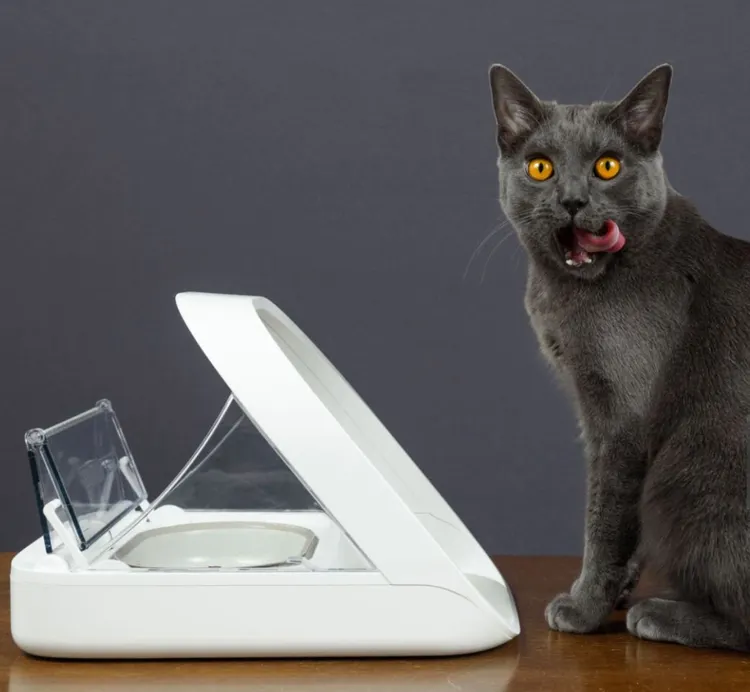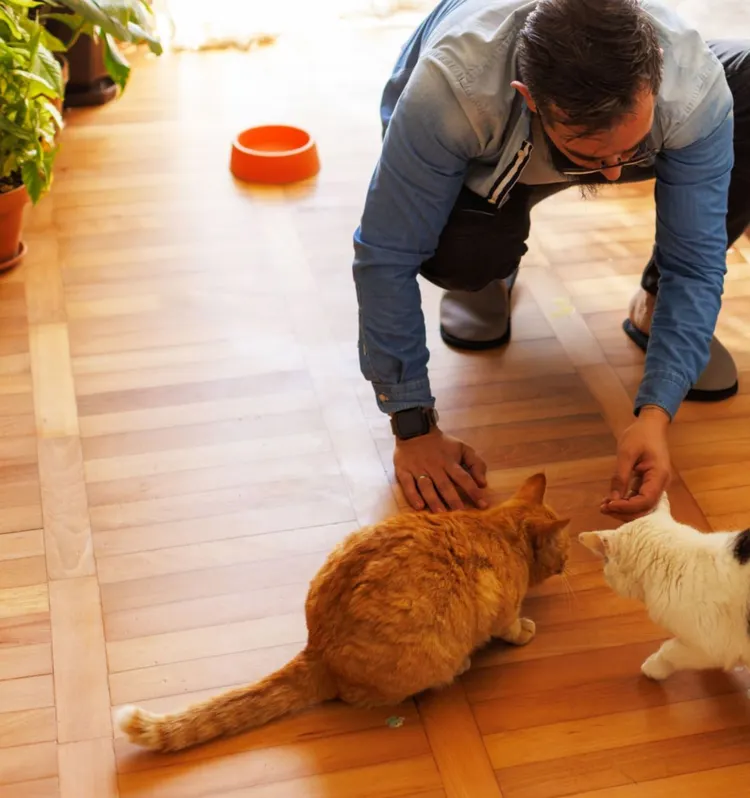Planning a trip but worried about leaving your cat alone for a few days? You’re not alone—many cat owners feel the same way when they have to be away from their feline companions for an extended time. Cats may be independent creatures, but they still require careful planning and preparation to ensure their health, safety, and comfort when left alone. Leaving a cat alone for four days is manageable with the right strategies in place, especially if you incorporate eco-friendly solutions to minimize waste and environmental impact.
In this guide, we’ll discuss whether leaving your cat alone for 4 days is safe, how to prepare your home for their extended solo time, and eco-friendly ways to ensure their needs are met while you’re away.
Can Cats Be Left Alone for 4 Days?
Cats are known for being more independent than dogs, and they can usually handle being left alone for short periods. However, leaving your cat alone for four days requires careful consideration. Cats still need regular feeding, hydration, and mental stimulation, and their litter box needs to be clean to avoid stress and health issues.
Is It Safe to Leave Cats Alone for Four Days?
While some cats can handle solitude well, others may experience stress and anxiety when left alone for extended periods. Whether it’s safe depends on your cat’s temperament, age, and health. Adult cats in good health generally fare better than kittens or elderly cats who may have specific health or mobility concerns.
Some factors to consider before leaving your cat alone for 4 days:
- Temperament: Is your cat used to being alone for long periods, or does it become anxious when you leave?
- Health: Does your cat have any medical conditions that require daily medication or close monitoring?
- Age: Kittens and senior cats may need more frequent care and monitoring than adult cats.
For most healthy, adult cats, it’s possible to leave them alone for four days as long as proper preparations are made.
Preparing Your Home for an Eco-Friendly Absence
To ensure your cat’s well-being while you’re away, you’ll need to set up their environment for comfort, safety, and sustainability. Incorporating eco-conscious practices can help reduce waste and minimize environmental impact while keeping your cat happy and healthy.

1. Eco-Friendly Cat Litter
Choose biodegradable, natural cat litter made from materials like recycled paper, wood, or wheat. These options break down more easily than traditional clay-based litters and are better for the environment. Some eco-friendly cat litters are also designed to reduce odors, making them ideal for a multi-day absence.
Popular eco-friendly options include:
- Recycled Paper Litter: Highly absorbent and biodegradable.
- Wood Pellet Litter: Sustainably sourced and naturally odor-controlling.
- Corn or Wheat-Based Litter: Clumping and biodegradable, with minimal dust.
Make sure to clean the litter box thoroughly before leaving and provide a second box to ensure your cat has enough space while you’re away.
2. Automatic Feeders and Water Dispensers
To ensure your cat has access to fresh food and water, invest in automated feeders and water fountains. Look for energy-efficient models to reduce electricity usage while you’re gone.
- Automatic Feeders: These can be programmed to dispense food at set times, ensuring your cat gets the correct portions throughout the day. Opt for feeders that work without excess plastic, or ones made from recycled materials.
- Water Fountains: Cats tend to prefer running water, so a water fountain can keep them hydrated while you’re away. Choose models with filters that can be replaced with natural or recyclable materials.
3. Preparing a Safe Environment
While preparing your home, consider both your cat’s safety and the environment. Start by ensuring there are no hazards your cat could get into, such as toxic plants, exposed cords, or unsecured cabinets.
- Hide Toxic Plants: Cats are known to nibble on houseplants, so remove any toxic plants or move them to areas your cat can’t reach. Common toxic plants include lilies, aloe vera, and philodendrons.
- Secure Dangerous Areas: Close off rooms or areas where your cat could get trapped or injured. Ensure that windows are secure and that there are no sharp objects or small items they could swallow.

Hire a Pet Sitter or Ask a Neighbor to Check-In
Even though automated systems can help maintain your cat’s basic needs, it’s a good idea to have someone check in on your cat at least once during your 4-day absence. This helps ensure your cat’s well-being and provides some companionship.
1. Pet Sitter
Hiring a pet sitter is a responsible choice, especially if your cat is prone to loneliness or has medical needs. Look for a pet sitter who shares your eco-friendly values and is willing to use sustainable products in your home, such as biodegradable litter or energy-efficient appliances.
A pet sitter can:
- Refresh food and water supplies.
- Clean and refresh the litter box.
- Spend some time interacting with your cat to reduce stress.
2. Trusted Neighbor
If hiring a pet sitter isn’t feasible, ask a trusted neighbor to check in on your cat. Provide detailed instructions about feeding, litter box cleaning, and any other important care routines. Leaving a small gift or eco-friendly token of appreciation for their help can also be a nice gesture.
Automated Solutions for Eco-Friendly Cat Care
If you can’t arrange for a sitter, automated solutions are the next best thing. Thankfully, there are many eco-friendly options on the market that ensure your cat’s needs are met while minimizing energy use and waste.
1. Sustainable Automatic Feeders
There are many automatic feeders available that work on timers or remote control via an app. Choose feeders that are made from recycled materials or ones with low energy consumption.
2. Water Fountains
A water fountain is not only great for keeping your cat hydrated but also for encouraging them to drink more. Look for water fountains with eco-friendly filters, such as those made from coconut husks or recycled materials. Choose a fountain with a timer or motion sensor to save energy.
3. Self-Cleaning Litter Boxes
A self-cleaning litter box can help maintain cleanliness while reducing waste. Some eco-friendly options use biodegradable liners or have energy-efficient modes to minimize electricity usage. Make sure to choose a litter box that uses minimal energy and has a good reputation for durability to avoid frequent replacements.
Keeping Your Cat Entertained
A bored cat can quickly become a stressed cat. Leaving some form of entertainment behind can help your cat stay mentally and physically stimulated while you’re gone.
1. Eco-Friendly Cat Toys
Before you leave, scatter some eco-friendly cat toys around the house. Toys made from natural materials like wool, hemp, or recycled fabric are great options. Puzzle feeders are also excellent for stimulating your cat’s brain and rewarding them with treats.
2. Scratching Posts and Cat Trees
Provide access to scratching posts or cat trees to give your feline friend a place to burn off energy and relax. If you don’t already have one, consider investing in a sustainable scratching post made from materials like recycled cardboard or untreated wood.
3. Window Perches
Cats love watching the world go by. Make sure your cat has a comfortable perch by a window, ideally one that gets some sunlight. This will keep them entertained for hours, observing birds, passersby, or even just the changing weather.
Ensuring Comfort and Security
Cats find comfort in familiar scents and surroundings. Before you leave, take a few steps to make your home feel safe and secure for your cat.
1. Leave Behind a Comforting Scent
Leaving an item of clothing with your scent can provide comfort to your cat while you’re away. Cats rely heavily on scent, and your familiar smell can help reduce any feelings of anxiety or loneliness.
2. Adjust the Temperature
Make sure your home’s temperature is set to a comfortable level. If you’re leaving during a particularly hot or cold season, consider adjusting the thermostat to keep the environment safe. An energy-efficient smart thermostat can regulate the temperature without wasting electricity.
Post-Trip Tips: Reconnecting with Your Cat
Once you return home, your cat may act differently due to your absence. Some cats may seem more affectionate, while others may seem aloof or even slightly agitated. Here’s how to make the transition smooth:
1. Give Them Time
Allow your cat to adjust to your return. Give them space if they seem overwhelmed, but offer plenty of attention if they seek comfort. Let them approach you when they feel ready.
2. Check for Signs of Stress
Monitor your cat for signs of stress or health issues. Excessive hiding, changes in eating or litter box habits, or aggressive behavior may indicate that your cat experienced stress while you were away. If these issues persist, a visit to the vet may be necessary.
Conclusion
Leaving your cat alone for 4 days can be a worry, but with proper planning, you can ensure they stay safe, comfortable, and eco-friendly. By using sustainable cat care products, preparing their environment carefully, and enlisting help when possible, you can enjoy your time away knowing your cat is well cared for. Whether it’s automated feeders, eco-friendly toys, or a trusted pet sitter, there are plenty of options to keep your feline friend happy and healthy until your return.



